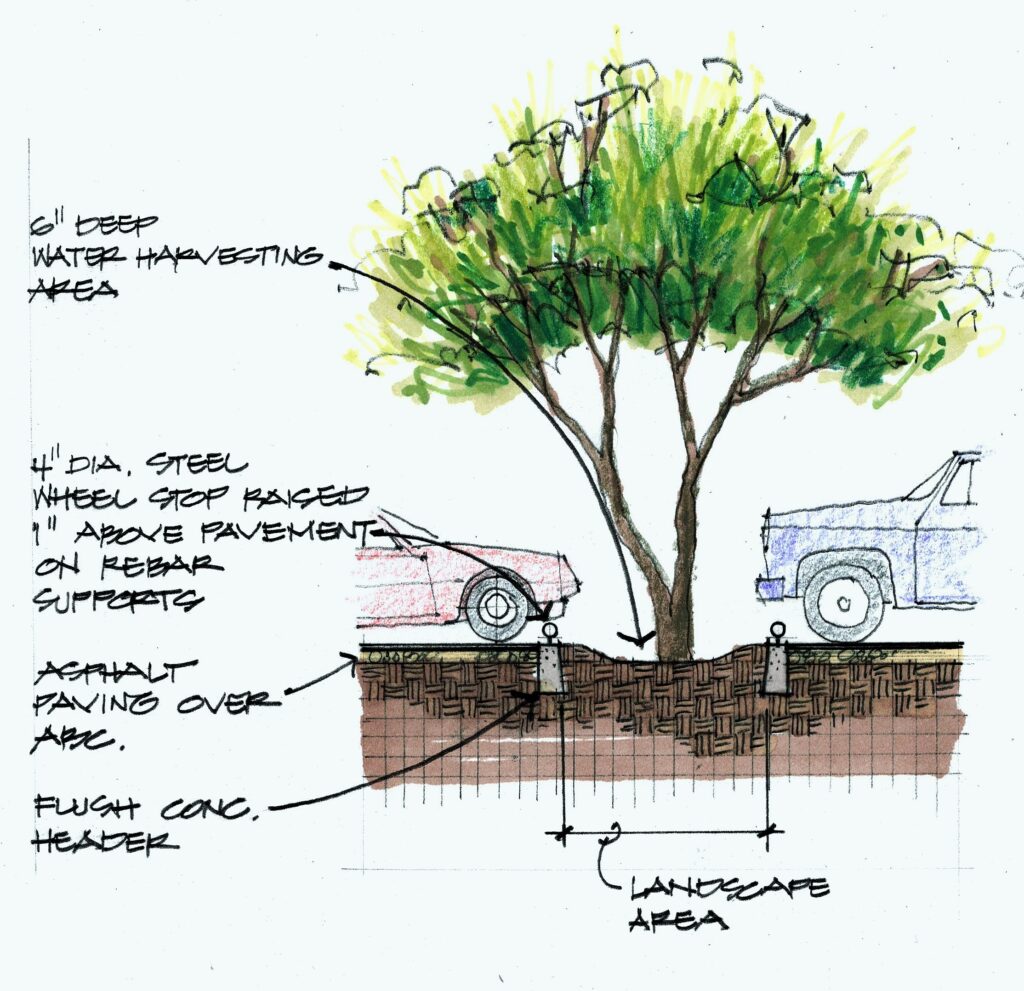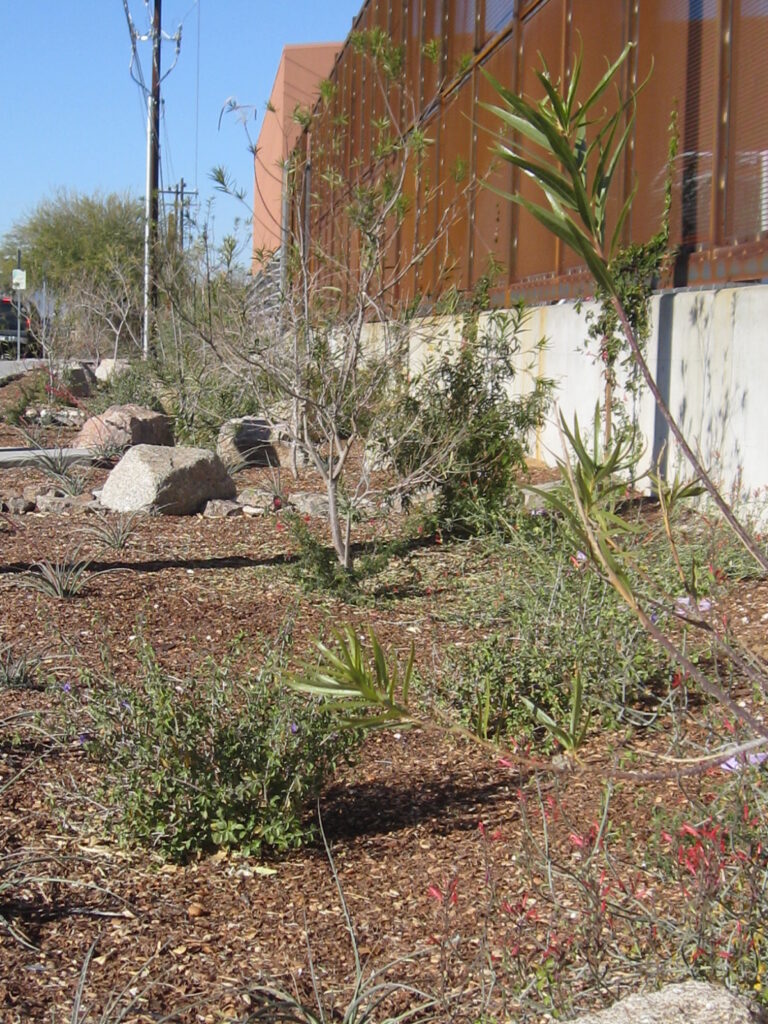Fundamentals

Water Harvesting
ARC Studios has been at the forefront of inventive water harvesting and irrigation design practices as well as resourceful implementation methodologies. ARC Studios prioritizes the incorporation of comprehensive water harvesting and sustainable design principles on all projects. The limits of design and the subsequent application in construction can be coordinated and adjusted in accordance with the project budget and client requirements. Water harvesting can be achieved through incorporating varying levels of active to passive systems.
The essence of this process is predicated on detailed data collection, calculation, evaluation, documentation, and design integration with architects/engineers. Designs are further developed by the utilization of select vegetative species and their individual water requirements. Plant selection is carefully evaluated and appropriate for the site; approved by client/user/stake-holder groups, while remaining responsive to surrounding habitats. Landscape vegetation selection emphasizes native, site indigenous and drought tolerant species. The reduction of hardscape elements and the promotion of permeable pavements and subterranean water retention systems in conjunction with non-standardized/innovative irrigation systems, provides a responsible and measurable address to the environmental, economic, and sustainable requirements of our desert southwest community.
Passive System Elements:
- Design recommendations for depressed landscape areas at a minimum of 6” and if applicable, of 12” or greater.
- Improve site soil percolation, absorption and retention characteristics.
- Provide landscape swales to convey storm flows to catch basins, inventive below grade storm water collection, retention and absorption structures.
- Slow surface flow and promote soil percolation.
- Use of straw mats, wattles, straw bales and coco fiber mats to absorb and retain moisture.
- Use of earthen ridges, bench ridges and rock ridges to retain water and mitigate site erosion while maximizing site water retention.
- Encourage storm water use through a comprehensive overall site distribution design as appose to concentrated retention structures.
- Basin site design with multiple points from percolation.
- Basin site design with organic materials, reducing mined / imported materials and encourage moisture retention.
Semi-Active System Elements:
- Storm water directed to proposed vegetation through a gravel trench and trench drainage, which is connected to gravel sumps and vertical water retention pit structures near plants that have the highest water requirements.
- Encourage the use of infiltrators and water storage that will dissipate as soil moisture decreases.


Active System Elements:
- Use of above and below ground water directional, captive and retentive structures to utilize available storm and irrigation applied water for use during dry seasons.
- Creative project design allowing the adaptive/multiple use and increased function of structural elements for purposeful user accommodations as well as site water redirection and retention purposes, providing significant cost savings to the agency / client.
- Active water harvesting and irrigation system design applications predicated on hands free, maintenance free principles, providing additional economy and efficiency for the owner.
- Holistic / environmentally sensitive design approach – plant selection, water collection, water retention/detention, storage, and redistribution.
- Innovative Irrigation Design, Details and Specifications – Supplemental water distribution based on the plants uniquely individual and estimated water requirements for optimal plant development and establishment. The site-specific project design is married to evaporation-transpiration (evapotranspiration) (ET) rates, ET sensors and data, soil moisture sensors, soil water retention characteristics, monthly / annual rainfall calculations, state of the art irrigation design/controller applications and integrative construction methodologies.
- As may be required by agency / client, the use of active subterranean storage tank systems can be incorporated as an additional harvesting and site water management consideration.
Summary:
ARC Studios provides measurable project success in addressing the growing need for economically responsive, sustainable water resource management. In conjunction with an innovative/proactive approach and with a proven, experience-based business management philosophy, ARC Studios predicates its success in remaining a viable and competitive Landscape Architecture services firm in a challenging economic environment.